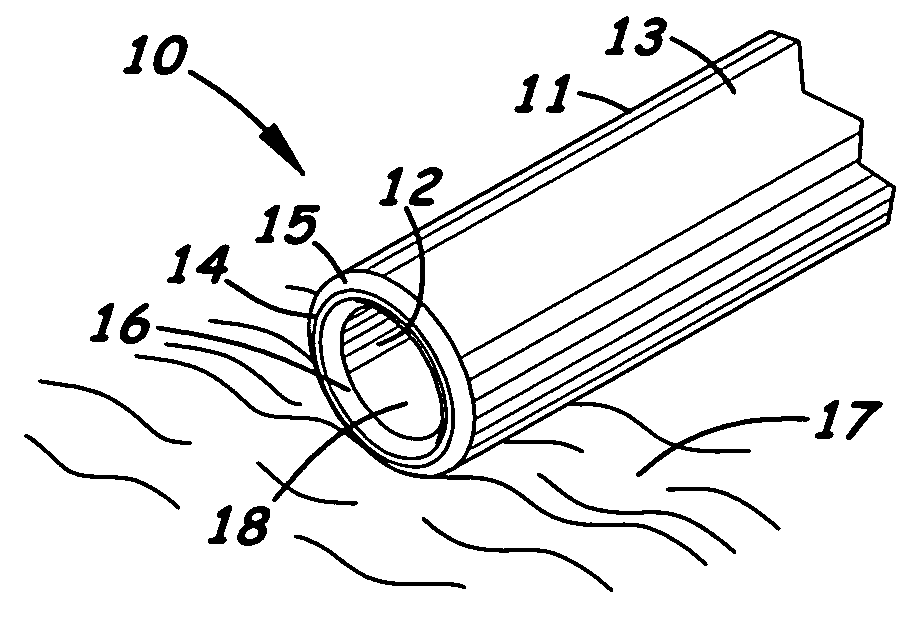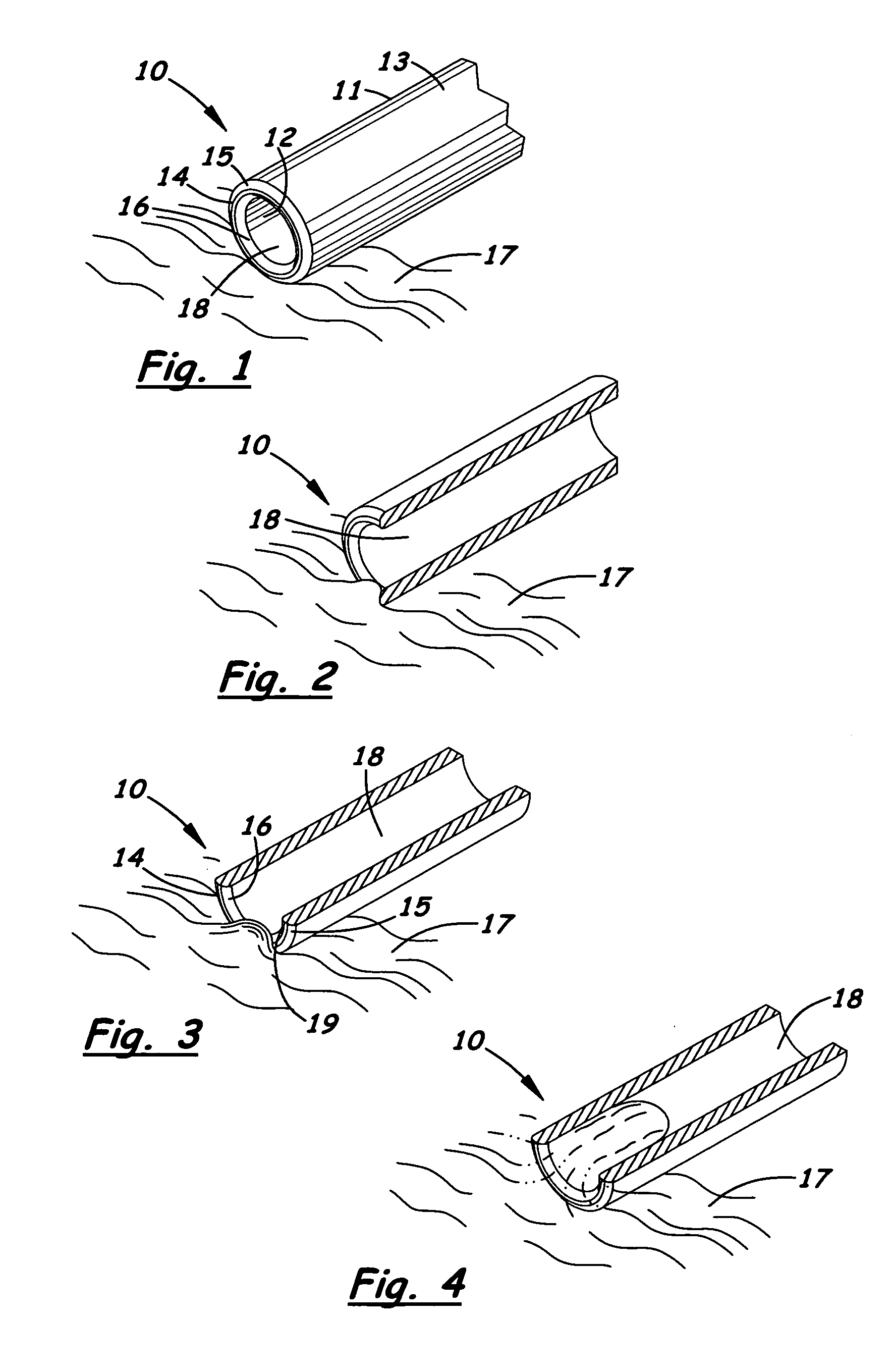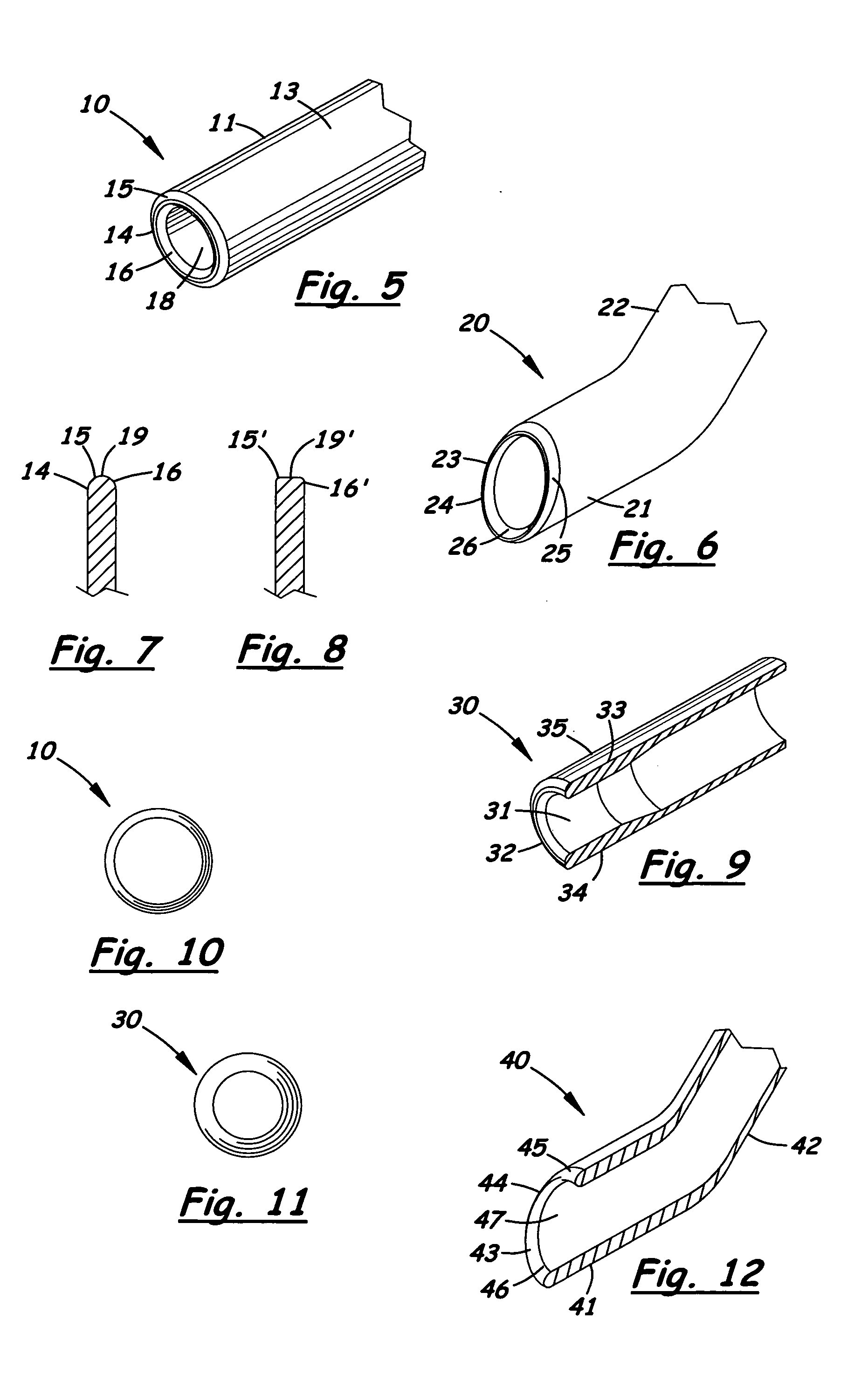Phacoemulsification device having rounded edges
a phacoemulsification device and rounded edge technology, applied in the field of surgical instruments, can solve the problems of cutting edge damage to the lens capsule and iris, damage to the incision, etc., and achieve the effects of reducing the risk of damage, and eliminating any sharp edges
- Summary
- Abstract
- Description
- Claims
- Application Information
AI Technical Summary
Benefits of technology
Problems solved by technology
Method used
Image
Examples
Embodiment Construction
[0069] Several embodiments of phacoemulsification needles and device according to the present invention will now be described with reference to FIGS. 1 to 45 of the accompanying drawings.
[0070] A phacoemulsification needle 10 according to a first embodiment of the present invention is shown in FIGS. 1 to 5. The needle 10 includes a hollow member 11 having an inner surface 12, a cylindrical outer surface 13, and a distal end tip 14. The distal end tip 14 has a rounded outer edge 15 and a rounded inner edge 16 and is carefully manufactured to avoid or eliminate any surfaces coming to a sharp point or sharp edge. Accordingly, the distal end tip 14 of the hollow needle 10 displays no surface coming to a sharp point or sharp edge.
[0071] The lens capsule 17, in its flaccid or resting state empty of contents, is essentially flat, depending on the fluidics in the eye at the time of observation. Typically it lies like a tablecloth draped over a bucket, provided the fluidics are at neutral....
PUM
 Login to View More
Login to View More Abstract
Description
Claims
Application Information
 Login to View More
Login to View More - R&D
- Intellectual Property
- Life Sciences
- Materials
- Tech Scout
- Unparalleled Data Quality
- Higher Quality Content
- 60% Fewer Hallucinations
Browse by: Latest US Patents, China's latest patents, Technical Efficacy Thesaurus, Application Domain, Technology Topic, Popular Technical Reports.
© 2025 PatSnap. All rights reserved.Legal|Privacy policy|Modern Slavery Act Transparency Statement|Sitemap|About US| Contact US: help@patsnap.com



